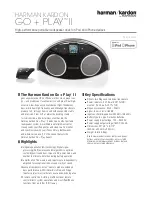
- SS-HQ1 Application Notes -
Ver.1.0.0 January 7, 2005
24
3.6.3. If Noise Occurs
If noise on the screen from in the designed board is confirmed, identify the source of the noise before taking
appropriate measures. Means of identifying noise sources are described below.
One method that simplifies checking how noise is generated is to block the lens and set AGC to maximum that
is, set AGCMAX (CAT14_Byte1_bit4) to 1. This makes investigating noise easier.
1. Using the pattern generator function
The pattern generator (PG) function inserts a generated signal immediately after the CXD3172AR's
internal A/D signal input area. This pattern generator can be used to identify the general area where the
noise is occurring.
If the noise is eliminated when the pattern generator is displayed, then the noise is occurring on the
portion from the CCD to the CXA2096N or on the front end of the CXD3172AR. If the noise remains, it
may be occurring at a later point (including the CXD3172AR).
2. Separating ECK
ECK (pin 88) is an input pin for the encoder clock. Depending on the layout of the X'tal oscillator
connected to this pin, the oscillator clock may become mixed in signal lines and generate noise on the
screen.
If so, remove the X'tal and connect the input side (ESCI, pin 86) of the DSP's internal inverter to the
ground. In this state send the clock from an external source to ECK. If the noise is eliminated, the cause
of noise is the X'tal oscillator layout or the pattern design of another signal line.
3. Separating VIN
VIN (pin 3) is an input pin for ADC analog signals. Separate this pin from the CXA2096N and connect it
to a stabilization DC power supply to check for noise on the screen. If the noise is eliminated, it may be
occurring at a source closer to the front end than the CXA2096N (including the CCD) before it enters
the CXD3172AR. If the noise remains the cause may be back-end sites, including the CXD3172AR.
4. Eliminating the PLL loop
The PLL circuit, which inputs the clock in MCK (pin 43), performs feedback control to maintain a
constant phase in the oscillating circuit. If noise enters the PLL circuit control signal, the noise appears
on screen. In MCK, the PLL oscillator circuit input pin, supply a signal of a fixed wavelength (such as
the X'tal's) that does not use PLL. Check if the noise is eliminated. If it is, the cause of noise is the
layout or pattern design of circuits around PLL.
5. Separating the power supplies
It is difficult to identify sources of noise propagating over power lines. Therefore, disconnect the primary
circuit and IC power supplies. Supply power from a clean external source to identify the point where the
noise is eliminated.
















































